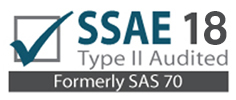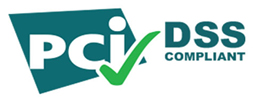ERP (Enterprise Resource Planning) solutions are software systems that integrate and automate various business processes, such as finance, accounting, procurement, supply chain management, and human resources. They provide businesses with a unified view of their data and operations, enabling them to make more informed decisions, streamline processes, and improve overall efficiency and productivity.

ERP solutions are important for businesses of all sizes, as they can help organizations manage growth, reduce costs, and improve customer satisfaction by providing real-time access to accurate data. They also support compliance with regulatory requirements and improve supply chain visibility and collaboration. With an ERP system in place, businesses can gain a competitive advantage by having a single source of truth for their data and processes, which helps to minimize errors and eliminate silos of information.
Conducting a needs assessment before choosing an ERP solution is crucial for the success of the implementation project and the long-term benefits for the organization. Here are the key reasons for conducting a needs assessment:
-
Alignment with business goals: The needs assessment helps to align the ERP solution with the business objectives and strategy. This ensures that the chosen solution fits the organization's specific requirements and supports the business in achieving its goals.
-
Identification of current processes and challenges: The needs assessment provides an opportunity to examine and document the current business processes, identify areas for improvement, and assess any challenges that need to be addressed with the ERP solution.
-
A better understanding of requirements: By understanding the organization's needs, requirements, and challenges, the needs assessment provides a basis for evaluating and comparing ERP solutions to ensure that the chosen solution meets the organization's specific needs.
-
Better alignment between IT and business departments: The needs assessment helps to bring together the IT and business departments to collaborate and agree on the ERP requirements. This helps to ensure that the ERP implementation project is successful and that the solution is used effectively by the business.
-
Improved ROI: By conducting a thorough needs assessment, organizations can avoid the risk of choosing an ERP solution that doesn't meet their requirements and investing in unnecessary features. This leads to improved return on investment (ROI) and better use of resources.
Understanding your business needs and processes
Understanding your business needs and processes is critical when choosing an ERP solution. This understanding provides a foundation for selecting the right solution that can best support and improve your business operations. Here are the main reasons why it is important:
-
Tailored solution: An understanding of your business needs and processes allows you to identify the specific features and functionalities that are required in an ERP solution. This helps you to choose a solution that is tailored to your business, rather than a generic one that may not meet your specific requirements.
-
Improved efficiency: By understanding your business processes, you can identify areas for improvement and ensure that the ERP solution you choose supports and streamlines these processes. This leads to increased efficiency, productivity, and cost savings for your business.
-
Better integration: An ERP solution that is tailored to your business needs and processes is more likely to integrate seamlessly with your existing systems and workflows. This leads to improved data accuracy, better data flow, and reduced data silos.
-
Better user adoption: An ERP solution that is well-aligned with your business needs and processes is more likely to be adopted and used effectively by your employees. This leads to improved data accuracy, better data flow, and reduced data silos.
Understanding your business needs and processes is a crucial step in choosing an ERP solution that will support your business and help you achieve your goals.
When conducting a needs assessment for an ERP solution, there are several key areas to focus on to ensure that the chosen solution is aligned with the organization's business goals and meets its requirements. These areas include:
-
Business growth goals: An understanding of the organization's growth goals is essential to determine the functionalities required in an ERP solution. For example, if the organization is planning to expand its operations, it may need an ERP solution with robust supply chain management and logistics capabilities.
-
Current pain points: Assessing the organization's current pain points, such as inefficiencies, bottlenecks, or limitations in current processes, is important in determining the areas that an ERP solution can help to improve. This helps to prioritize the requirements for the ERP solution and ensure that it addresses the most critical business needs.
-
Role of technology in the business: Understanding the role of technology in the business and how it supports the business objectives is essential in choosing an ERP solution. For example, if the organization relies heavily on technology for its operations, it may need an ERP solution with robust integration capabilities and advanced analytics capabilities.
-
Data management and reporting requirements: An assessment of the organization's data management and reporting requirements is important in choosing an ERP solution that supports data integration, data accuracy, and data security. This helps to ensure that the organization has access to accurate data in real-time, which supports informed decision-making.
-
User requirements: An assessment of the ERP requirements of different departments and user groups within the organization is important in choosing a solution that supports the needs of different users. This helps to ensure that the solution is adopted and used effectively by all stakeholders, leading to better outcomes for the business.
Focusing on these key areas during a needs assessment helps to ensure that the chosen ERP solution aligns with the organization's business goals, meets its requirements, and supports its objectives.
Identifying the right ERP solution
ERP solutions are software systems designed to manage and automate key business processes, such as finance, supply chain management, and human resources. There are several different types of ERP solutions available, including:
-
On-premise ERP solutions: These are ERP solutions that are installed and run on the organization's own servers and infrastructure. On-premise ERP solutions provide more control and customization options, but they also require significant investments in hardware and IT infrastructure, as well as ongoing maintenance and upgrades.
-
Cloud-based ERP solutions: These are ERP solutions that are hosted and run by a third-party provider and accessed through the internet. Cloud-based ERP solutions are typically more cost-effective, scalable, and flexible, but they also require a reliable internet connection and may not provide the same level of control and customization as on-premise solutions.
-
Hybrid ERP solutions: These are ERP solutions that combine on-premise and cloud-based components to provide the best of both worlds. Hybrid ERP solutions allow organizations to keep critical business data and processes on-premise for security and control while taking advantage of the benefits of cloud-based technology for scalability and flexibility.
At SolaDrive, we offer managed cloud ERP solutions. We believe this is the best solution for the following reasons:
-
Cost savings: Managed ERP solutions can help organizations to save costs as they typically include hosting, maintenance, and upgrades as part of the service. This eliminates the need for organizations to invest in and maintain their own IT infrastructure, reducing costs and freeing up resources for other business needs.
-
Scalability: Managed ERP solutions are typically cloud-based, which means that they can be easily scaled up or down to meet changing business needs. This allows organizations to adjust their IT infrastructure quickly and cost-effectively, reducing downtime and maximizing business agility.
-
Access to expert support: Managed ERP solutions are provided by experienced providers who have deep expertise in the technology and can provide prompt and effective support for any issues or questions that arise. This helps to ensure that the ERP solution is running smoothly and that the organization has access to the resources it needs to make the most of the technology.
-
Increased security: Managed ERP solutions typically include advanced security features and best practices, such as encryption and disaster recovery. This helps to protect the organization's data and critical business processes from cyber threats and data loss.
-
Improved reliability: Managed ERP solutions are typically highly available and resilient, providing organizations with reliable and consistent access to their ERP data and processes. This helps to ensure that the organization can continue to operate smoothly even in the event of unplanned downtime or system failures.
Choosing our managed ERP solution can help your organization to focus on its core business activities and achieve its growth objectives while letting us do the heavy-lifting with the ERP and IT infrastructure.
Key factors to consider when choosing an ERP solution
When choosing an ERP solution, it's important to consider a range of factors to ensure that the solution meets the specific needs and requirements of the organization. Some key factors to consider include:
-
Scalability: An ERP solution should be able to grow and change with the organization, adapting to its evolving needs and requirements. It's important to choose a solution that can scale up or down as needed, without significant disruption to the organization's operations or significant additional costs.
-
Customization: An ERP solution should be able to be tailored to meet the unique needs and processes of the organization. The solution should be flexible and configurable, allowing the organization to make changes and additions as needed, without requiring extensive custom programming.
-
Ease of use: An ERP solution should be user-friendly and intuitive, with a simple and straightforward interface that allows users to access the information and tools they need quickly and easily. The solution should also be well-documented and supported, with robust training and help resources available to users.
-
Integration with existing systems: An ERP solution should be able to integrate with other systems and tools that the organization is already using, such as CRM, accounting, and inventory management systems. This will help to reduce data duplication and improve data accuracy, as well as streamlining processes and improving efficiency.
-
Security and data protection: An ERP solution should include robust security and data protection features, such as encryption and backup and recovery, to ensure the safety and privacy of the organization's data and critical business processes.
-
Cost: An ERP solution should fit within the organization's budget, providing value for money and a good return on investment. It's important to carefully evaluate the total cost of ownership of the solution, taking into account factors such as licensing, hardware, and support and maintenance costs.
-
Vendor and provider: The vendor and provider of the ERP solution should be reputable, reliable, and have a strong track record in delivering quality solutions and customer support. It's important to choose a vendor and provider that the organization feels comfortable working with and that can provide the level of support and assistance needed over the life of the solution.
When choosing an ERP solution, it's important to carefully these factors to ensure that the solution meets the specific needs and requirements of the organization and provides a good return on investment.
Developing a roadmap for ERP implementation
An ERP (Enterprise Resource Planning) implementation roadmap is essential for the successful deployment of an ERP system. The roadmap serves as a guide for the implementation team and outlines the necessary steps, timelines, budgets, and responsibilities involved in the process. It provides a clear picture of the project's scope, objectives, and expectations, helping to ensure that the implementation stays on track and meets the desired outcome.
Timelines: A well-defined timeline helps ensure that all tasks are completed within the desired timeframe and helps to prioritize tasks based on their significance. It helps to ensure that deadlines are met, and that the implementation stays on schedule.
Budgets: The budget is an essential aspect of the ERP implementation roadmap as it outlines the financial resources required to successfully complete the project. A clear budget helps to identify potential cost overruns and helps to ensure that the project stays within financial constraints.
Responsibilities: Clearly defined responsibilities help to ensure that everyone involved in the project understands their role and responsibilities. It helps to avoid confusion and reduces the risk of delays and misunderstandings.
Having a comprehensive ERP implementation roadmap is critical for the success of an ERP implementation project. It provides a clear plan and helps to ensure that all aspects of the project are considered, planned, and executed effectively.
Developing an ERP roadmap is a crucial step in the successful implementation of an ERP system. The following are key steps to take when developing an ERP roadmap:
-
Conduct a Business Process Review: The first step in developing an ERP roadmap is to conduct a thorough review of the organization's business processes. This involves identifying the key processes that need to be automated or streamlined and the impact they have on different areas of the business.
-
Identify Stakeholders: Involve stakeholders from different areas of the business in the ERP implementation process. This includes representatives from finance, operations, marketing, sales, and IT. The involvement of stakeholders helps to ensure that the ERP solution meets the needs of the business and supports its goals.
-
Conduct a Pilot Test: A pilot test is a crucial step in developing an ERP roadmap. It allows the organization to test the ERP system in a controlled environment before it is rolled out to the entire organization. This helps to identify any issues that need to be addressed and ensures that the ERP system will meet the organization's needs once it is deployed.
-
Define Objectives and Expectations: Define the objectives and expectations for the ERP implementation. This includes defining the desired outcomes, timelines, budgets, and responsibilities. This helps to ensure that everyone involved in the project has a clear understanding of what is expected.
-
Develop a Project Plan: Develop a detailed project plan that outlines the key tasks, timelines, budgets, and responsibilities involved in the ERP implementation. This includes a timeline for each stage of the project, including planning, development, testing, and deployment.
-
Continuously Monitor and Evaluate Progress: Continuously monitor and evaluate the progress of the ERP implementation. This includes regular check-ins with stakeholders and regular reviews of project timelines and budgets. This helps to ensure that the project stays on track and that any issues are addressed in a timely manner.
By following these steps, organizations can ensure that their ERP implementation is successful and that their ERP system meets their needs and supports their goals.
In conclusion, taking a strategic approach to ERP selection and implementation provides organizations with numerous benefits, including improved business processes, better decision-making, increased collaboration, cost savings, and improved customer satisfaction. By considering these benefits, organizations can make informed decisions about their ERP system and ensure that they select and implement the right solution to meet their specific needs.
Whatever your ERP requirements, you can find an ERP solution that fits your exact needs with SolaDrive. Take a look at our ERP offerings here.



















